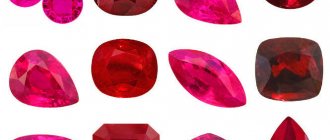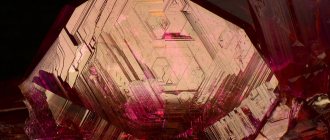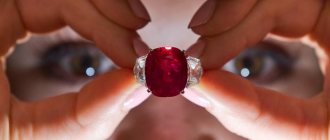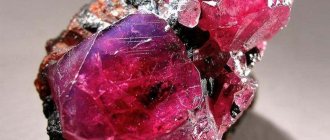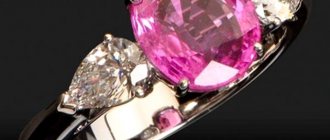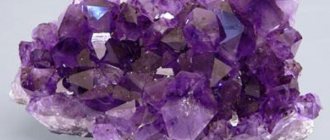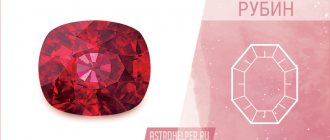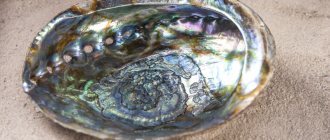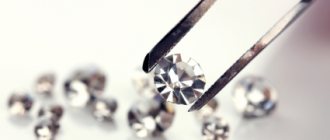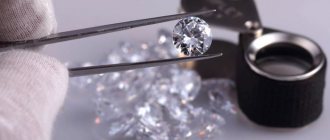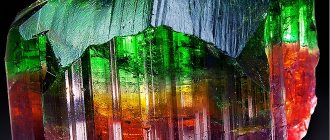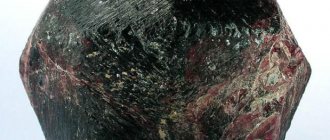As sad as it may be, many stones on the market have been refined. The most common method of refining is heat, which some stones like ruby, sapphire, tanzanite or blue zircon are almost always subjected to. Some stones, such as blue topaz, for example, are irradiated: in fact, it is impossible to find a richly colored topaz that has not been irradiated. One of the most insidious methods of refining is coating. Such stones tend to peel off. Cracked stones like emerald are refined with oils, resins and other substances: cracks in the stone, saturated with them, cease to be noticeable. One of the new ways to refine corundum is diffusion using beryllium impregnation. This is how 99% of colored sapphires are obtained (so-called fancy sapphires). Rubies are boiled in red glass, this leads to filling of cracks and intense coloring. Sometimes it seems that there are no untreated stones left at all.
It is important to understand that ennoblement in itself does not bring anything bad. Treated natural stones remain natural, especially when natural techniques such as heating are used. This is only bad if the seller passes off a refined stone as an untreated one in order to increase the price. Conscientious sellers will always tell the history of the stone (if, of course, this is possible) and will not pass off irradiated blue topaz as topaz with a natural rich color, such as 0.00001% of stones.
The idea of gentrification is far from new. Pliny's Natural History covers a wide range of techniques for altering stones, including heat, oil impregnation, bleaching, and various coatings. Some of these ancient techniques are clearly fraudulent, but now refinement is simply a way to provide the market with material in the face of very limited supplies of new natural stones.
Despite the spread of refinement and refined stones, for those who accept only stones in their original form, without any improvements other than cutting, there are still opportunities to find something interesting. There is no need to tempt fate in finding unrefined sapphires and rubies. There are several varieties of stones that combine good characteristics - hardness, durability, brilliance and transparency - with stunning color, although they have not been refined. You can buy such stones with complete confidence that the color will be natural. Here are a few such stones:
Spinel (more accurate name: noble spinel)
This mineral is distinguished by a crazy abundance of different shades. The stone is so diverse that it is almost impossible to choose a pair for earrings: any two will be at least slightly different. Therefore, by the way, they often collect several stones of different shapes per product. Spinel has a hardness of 8, excellent play of light and transparency. Spinels are often confused with rubies and sapphires, but they also come in other, no less interesting colors: orange, purple, silver, lavender, purple, pink.
How to distinguish a real ruby from an artificial one
After filling the jewelry market with imitation natural stones, the issue of recognizing a fake has become extremely acute. Today there are many ways to distinguish a real ruby from a fake:
- The easiest way to check the authenticity of a stone is to put it in a glass glass; even a regular faceted one will do. The glow should be reflected from the glass. Synthetic stone does not have such properties.
- If exposed to an ultraviolet lamp, the original will appear red. Synthetics will still glow orange.
- Presence of bubble inclusions. Synthetic stones have one feature. As a result of the ongoing physical and chemical manipulations, tiny inclusions remain on the surface, formed from bubbles of gas released during the reaction.
- Chromium content. Natural stones with a pigeon's blood hue have a very delicate balance of chromium content, which is the root cause of the hue. It is not possible to achieve such a fine balance, and at the same time the shade, in synthetic crystals. Therefore, if a ruby has a “pigeon’s blood” tint, then it is one hundred percent original.
- If it has a crack, then you need to pay attention to its shape. In natural stones it will always be zigzag. This is due to the high hardness of the crystals, which synthetics do not fully possess. She almost always has them straight.
- Weight. A real ruby, since it is a hard and heavy mineral, will always be heavier than it appears visually.
Method 1: Valuing ruby at home
Of course, no one can evaluate a stone better than an experienced jeweler. However, in cases where there is no opportunity to contact a specialist, but you really want to know, there are simple methods for identifying a ruby at home. These manipulations can easily be carried out at home.
The simplest thing you can do is view the stone in natural light. By pointing the crystal towards the sun, the side facing the luminary will play and shimmer, while the opposite side will remain dull.
The second method requires stone and glass. Due to their exceptional hardness, red stones can easily cut glass and thin-walled metal. If a red mark remains in a scratch on glass or metal, this is a sign that, most likely, the stone is not of natural origin.
Naturally occurring crystals are poor thermal conductors. If you take a stone, some recommend placing it on your eyelid and holding it for a short amount of time, it should not heat up quickly. If the stone becomes warm within a couple of minutes, most likely it is synthetic or colored corundum or a completely different stone.
Another effective way is to place the stone in a container of water. A real stone should have a red shimmer in the water.
You should not buy jewelry that does not provide for inspection from the inside. This is an old trick of unscrupulous jewelers, and it is better to refuse such a purchase immediately.
Although this method is dubious, it is worth mentioning. It is believed that if you leave a stone in a glass of homemade cow's milk, the milk will soon turn pink. In this case, the stone is considered to be real. But this method should not be trusted.
Method 2: Consult a jeweler
Why should you turn to specialists? Because even if a stone passes all home tests perfectly, this does not mean that it is worth its price. The stone can simply be reconstructed. Reconstructed natural stones are real fragments fused together.
The master's assessment is a guarantee of authenticity. And if you send the stone for examination to the Assay Office, an organization that guarantees the sale of genuine and high-quality stones in the country, then there is no doubt about the authenticity.
Method 3. Examining the stone with a magnifying glass
For this study, a 10x magnifying glass or microscope is better suited.
What you should pay attention to during inspection:
- edges and cutting. They should be clear and even. If the edges are rounded, the stone is most likely fake;
- shine the stone under a magnifying glass. Examining the glow under a magnifying glass, deep tints and gloss should be easily noticeable. If the stone is star-shaped, then the overflows should have a star shape. It is worth remembering that the non-transparent side should remain cloudy or matte;
- if fragments are examined, then straight, even layers should be visible in the cross-section. In fake stones they are completely chaotic or crooked.
Why is synthetic ruby valuable?
Synthetic ruby is the first precious stone that man managed to create. The successful experience inspired other researchers to develop methods for synthesizing crystals. Without synthetic rubies, a person would hardly have learned to synthesize sapphires, emeralds, and diamonds.
Synthetic ruby is used not only in jewelry. Large single crystals are in demand in the watch industry, weaving, and metallurgy. The main element of most modern lasers is a ruby rod, and it is made of a synthetic crystal.
A lab-grown ruby is just as beautiful as a natural one. Synthesis technologies make it possible to reproduce the full spectrum of gemstone colors, as well as obtain samples with interesting optical effects. The cost of synthetic ruby is tens of times lower than natural ruby.
Heat treatment
This method has been known since the times of Ancient Egypt. Craftsmen made jewelry with heated carnelian stones .
High temperature has the following effects:
- Increased transparency.
- Color change.
- Irisation.
- Formation of a pattern of cracks.
- Bleaching
- Getting the asterism effect.
Discoloration of minerals occurs due to the displacement of color centers from their crystal lattice, and a change in color occurs due to the replacement of the original ions by titanium, iron, magnesium or other substances.
Where are rubies used?
Artificial ruby is used mainly in industry. It is as durable as natural, which is why it is used on the surface of sandpaper and in watch mechanisms. Often used in the production of lasers.
In folk medicine, ruby provides healing benefits. Carrying it with you helps people normalize sleep, improve vision, and reduce pain in the back. In Asia, it was believed that the mineral helps get rid of heart disease, as well as improve brain function and restore energy levels.
In alternative medicine, the mineral is used to prevent epilepsy attacks, restore the nervous system after severe stress, and depression. Many peoples consider ruby to be a magical stone. Its main purpose is to use it as jewelry. It looks very beautiful and elegant.
Properties of synthetic ruby
Synthetic ruby is not inferior in physical and optical properties to natural ruby. It has a hardness of 9 on the Mohs scale, making it one of the hardest minerals. In terms of hardness, ruby is second only to diamond and moissanite.
Synthesis technologies make it possible to reproduce the optical properties characteristic of natural stones. Thus, the Verneuil method can be used to obtain star rubies - stones with the effect of asterism. To do this, a small amount of titanium oxide is introduced into the charge, and the resulting crystals are annealed. Thin needles of rutile are formed inside the ruby, which can be located in different ways. If they are arranged in concentric rings, they look like a multi-rayed star; if they are oriented only in one direction, they resemble a cat's eye.
Characteristics of the stone
The cost of a natural ruby depends on 4 indicators: color, purity, weight and cut quality. The cost of synthetic depends on weight and color. This does not mean that in other characteristics it is inferior to natural stone: often the opposite is true.
Color
The color of ruby is due to the presence of chromium oxide in the composition. Depending on its concentration, as well as the presence of other impurities, rubies are:
- red;
- red-pink;
- red-brown;
- red-purple.
Chromium oxide is introduced into the charge even before the formation of the crystal begins. The concentration is determined by the shade to be obtained. For example, in dark red rubies the maximum permissible content of chromium oxide reaches 3%. A larger amount leads to clouding of the crystal and the appearance of cracks.
Synthetic rubies of a deep red color without a crimson undertone are difficult to obtain, and therefore they are valued higher.
Purity
The purity of ruby, that is, the presence of foreign inclusions, depends on the chosen synthesis method. The inexpensive Verneuil method results in the formation of a large number of gas bubbles, internal cracks and other defects. They are not always noticeable without a magnifying glass, but can still spoil the impression of the decoration.
In rubies grown using the Czochralski method, inclusions are much less common. The best crystals contain no more than one particle with a size of 0.5 microns per 1 cm3.
Weight
The Verneuil method is used to synthesize small rubies. With its help, you can also obtain large crystals, but with a high level of internal stress. To synthesize rubies with a length of 20-30 cm and a diameter of up to 20 cm, the Czochralski method is used.
Cut shape
Synthetic rubies are cut to any desired shape:
- "oval";
- "circle";
- "baguette";
- "heart".
The shape is chosen in such a way as to highlight the best qualities of a particular specimen: rich color, shine, play. Rubies with asterism, cat's eye or silky effects are treated with cabochons.
Heart-cut RusGems grown rubies
The influence of ruby on humans
Ruby is the stone of great people. It has the ability to enhance a person's basic traits, both good and bad. Ancient healers believed that a red stone in a ring or pendant strengthened the heart and gave protection, love and fertility to women who wore it. In the 16th century in Rus' there was a belief that a red yacht supported honesty and made a person self-confident.
You can only be convinced of the veracity of these beliefs through your own experience. The main thing is that the beauty, self-confidence and power of attraction of a woman who wears a ring, earrings or pendant with a bright red stone will definitely not go unnoticed.
How to distinguish a ruby from other stones
They often try to pass off other, cheaper ones as him. Often these are pyrope, red tourmaline and spinel.
They try to pass off only red stones as an ennobled ruby, since an experienced person will not confuse other shades of the crystal with anything else.
Ruby can be easily distinguished from pyrope by its color. The reds are more of a purple hue, and the pyrope has a red wine hue. If you still have doubts from comparing the color, it is worth checking for magnetization. Pyrope is magnetic, ruby is not.
Counterfeit tourmaline is also easy to check. Tourmaline does not withstand ultraviolet testing. Light passing through a stone turns orange, and through a ruby it turns red.
But with spinel everything is more complicated. Although it has a strawberry color, there are rubies with a similar shade, so it is impossible to say for sure whether it is spinel. Such a stone should be sent to a jewelry laboratory for examination.
